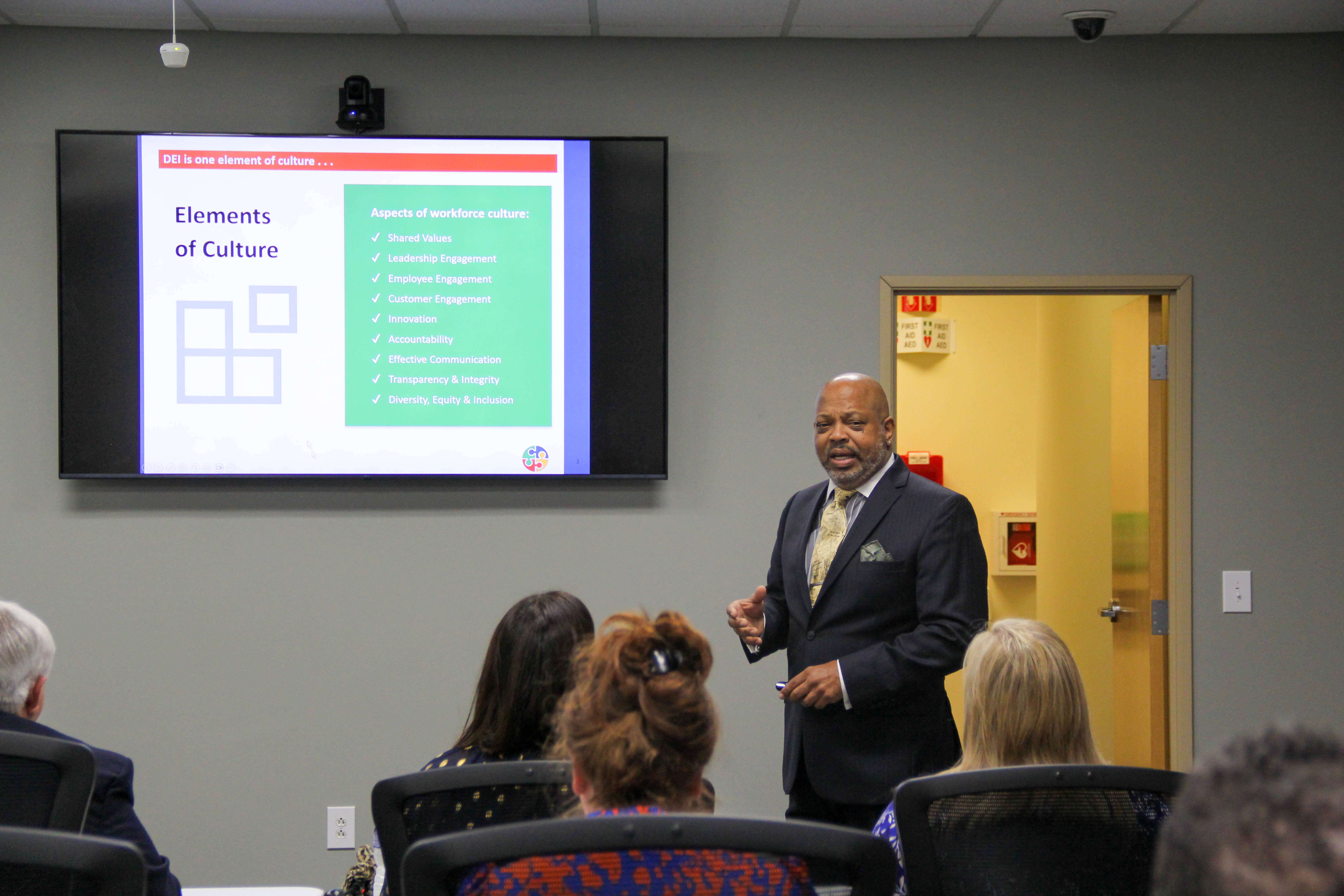Tomato Bisque vs. Gumbo: Crafting a Flavorful DEI Strategy

In today's ever-evolving corporate landscape, Diversity, Equity, and Inclusion (DEI) have become essential elements of organizational success. To shed light on effective DEI strategies, Dr. Alan Letton, Director of the Center for Economic & Community Development in Black Appalachia and Isolated Communities, spoke at our September Lunch & Learn Presented by Ohio Valley Bank. With years of experience as present and CEO of startup companies, and running a consulting firm specializing in this field, Dr. Letton emphasized the importance of viewing DEI as an integral part of a company’s culture and strategy. In this blog, we'll delve into the key takeaways and insights from the session and learn how you can craft a DEI strategy for your organization.
The Long Road to DEI
Dr. Letton highlighted the challenges that have hindered DEI progress over the years, mainly the tendency to treat it as a standalone initiative. To succeed, DEI must become an integral part of a company's culture, encompassing both the soft and hard aspects, such as employee and customer engagement, profitability, and revenue generation.
The Changing Landscape of DEI
The session shed light on the changing landscape of DEI, particularly in corporate leadership. In 2021, Chief Diversity and Inclusion Officer roles experienced significant growth. However, by 2023, 40% of these positions had vanished. Similar trends were observed in roles like Chief People Officer and Chief Talent Officer. This shift highlighted the need to reevaluate how DEI is approached within organizations. Isolating DEI efforts or treating them as one-off initiatives will lead to failure. Instead, businesses should focus on changing policies and strategies to effect behavioral change.
The Three Pillars of Strategy
Dr. Letton emphasized the importance of understanding the three pillars of an organization's strategy: people, process, and tools.
- People: This pillar represents the skills, knowledge, experience, and diversity within your workforce. People are the driving force behind any organization's success, making it crucial to have a diverse and skilled team.
- Process: Process refers to the systems and procedures that an organization utilizes to function effectively. These processes need to be inclusive and equitable, ensuring that everyone has equal opportunities.
- Tools: Tools encompass the software, technology, and resources an organization uses to manage its operations. DEI should be integrated into these tools, from HR management software to talent acquisition platforms.
The Gumbo vs. Tomato Bisque Analogy
Dr. Letton uses an analogy that illuminates the core issue many organizations face when approaching DEI. He asks, "Is DEI in your organization Tomato Bisque or is it Gumbo?"
- Tomato Bisque represents a one-size-fits-all approach that fails to recognize the uniqueness and diversity within your workforce. It's a bland, standardized strategy that doesn't acknowledge the rich flavors individuals bring to the table.
- Gumbo, on the other hand, signifies a vibrant, diverse, and flavorful approach. Just as Gumbo combines various ingredients to create a delightful culinary experience, a Gumbo-style DEI strategy embraces the unique cultures and backgrounds of your employees, enriching your corporate culture.
The DEI Strategy Framework:
- Analyzing Current State and Setting Realistic Goals: Assess your organization's current state concerning DEI. Identify gaps in representation, internal processes, and talent management. Understand where the "cliffs" and "holes" exist in your diversity landscape. Set realistic goals and key performance indicators (KPIs). Avoid targeting averages of the population, as it may not be realistic or effective. Instead, anchor your goals in a more attainable range based on your industry and region.
- Auditing the Community and Psychological Safety: DEI initiatives should extend beyond your organization's walls. Audit the community to identify external factors that may impact your DEI efforts. Additionally, create a culture of psychological safety, where employees feel comfortable challenging ideas and contributing to innovation without fear of retribution.
- Legal Analysis: Review the history of lawsuits and Equal Employment Opportunity Commission (EEOC) complaints related to your organization. This data can provide valuable insights into potential DEI challenges that need addressed.
- Examine Processes, People, and Tools: Examine your hiring, recruitment, skills development, and talent management processes. Ensure they align with your DEI goals. Assess the tools and resources your organization uses to support a diverse and inclusive culture.
- Strategic Integration of DEI: Use a framework like the Balanced Scorecard to integrate DEI objectives into your overall corporate strategy. This ensures that DEI becomes an integral part of your business and organization operations rather than a standalone initiative.

Image based on the original concepts of R.S.Kaplan and D.P. Norton, “The Balanced Scorecard - Measures that Drive Performance”, HBR, January-February 1992
Incorporating DEI into your organization's strategy is not a one-off event but an ongoing commitment to embracing and leveraging diversity as a corporate asset. By following a strategic approach that aligns with your business goals, you can create a culture that fosters innovation, inclusivity, and sustainable growth. Remember, just as gumbo's richness lies in its diverse ingredients, your organization's strength can be found in its diverse workforce and inclusive practices.
